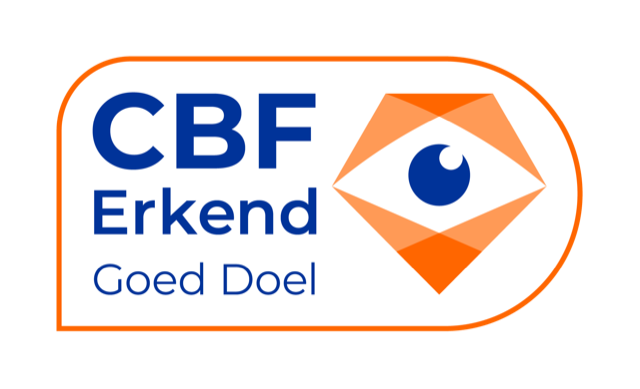About COP
The explosion of information and communication technologies (ICTs) has created unprecedented opportunities for children and young people to communicate, socialize, share, learn, access information and express their opinions on matters that affect their lives and their communities, while at the same time posing significant challenges to children’s safety.
In a world where the Internet permeates almost every aspect of life, keeping young users safe online has emerged as an increasingly urgent issue.
ITU developed its very first set of COP Guidelines in 2009. Since then, the Internet has evolved beyond all recognition. While it has become an infinitely richer resource for children to play and learn, today’s children face many risks online. The ITU Guidelines on Child Online Protection are a comprehensive set of recommendations for all relevant stakeholders on how to contribute to the development of a safe and empowering online environment for children and young people.Aiming at raising awareness on the scope of child online protection, while providing resources and actual tools that support children and their families in the development of digital skills and digital literacy and that additionally support industry and government stakeholders in the development of corporate and national child online protection policies & strategies. In an age where more and more young people are coming online, the updated COP Guidelines are more vital than ever. Since families, including children, the private sector as well as government stakeholders - all play a crucial role in children’s online safety, the ITU COP Guidelines are dedicated to each of these key players.
Targeting children, parents and educators, industry and policy-makers, the COP Guidelines are meant to act as a blueprint, which can be adapted and used in a way that is consistent with national or local customs and laws. As the nature and impact of ICTs is borderless, promoting online safety requires global efforts, through collaboration from all stakeholders at the local, national, regional and international level.
The Guidelines for parents and educators on Child Online Protection aim to sensitize families to the potential risks and threats and help cultivate a healthy and empowering online environment at home, and in the classroom. Highlighting key recommendations the guidelines emphasize the importance of open communication and ongoing dialogue with children, creating a safe space where young Internet users feel empowered to raise concerns.
Defining key risks and harms for children online, including privacy issues, cyberbullying, grooming and sexual exploitation and abuse (CSEA), the guidelines further dedicate additional attention to the impact of new and emerging technologies on children. In addition, while addressing the importance of the situation faced by children with disabilities, for whom the online world offers a particularly crucial lifeline to full – and fulfilling – social participation; the consideration of the special needs of migrant children and other vulnerable groups has also been included.
There are a range of aspects for parents and educators to consider when supporting their children or pupils as they go online. The guidelines highlight that alongside the many benefits there are also challenges and parents and educators will want to identify effective ways to protect children from harmful and inappropriate content online.
Parents will often be supported by Internet services providers and mobile operators who will provide parental control tools, ways to block and restrict access to certain types of content as well as the ability to limit the amount of time spent on devices. Education settings may include online safety within their curriculum and may be more likely to filter and monitor access. However, this is only part of the solution, dialogue and discussion are crucial and a key element is establishing a positive relationship between adults and children and young people.
These guidelines highlight a series of further recommendations for parents and educators to consider when having conversations with their children or pupils about what they do when they go online and how to support them when things go wrong.
Tips for parents, carers and guardians
Have a discussion with your children
try and do some online activities with them.
Consider age
of digital consent.
Educate children on
the dangers of meeting
up with a stranger.
Identify the technology, devices
and services across your family / household.
Control use of credit cards
and other payment mechanisms.
Help your children understand and
manage their personal information.
Consider whether filtering
and blocking or monitoring programmes can help and support your family.
Know how to
report problem.
Ensure children and young people understand what it means to
post photographs
on the Internet.
Agree expectations as a family
about using the internet and personal devices.
Be aware that
advertising can be inappropriate
or misleading.
Be aware of the online and mobile services
used by your children.
Create a
culture of support
in the home so that children and young people feel able to seek support.
Tips for educators
Ensure that all devices are secure and password protected.
Raise awareness of the importance of digital footprint and online reputation.
Install anti-virus software and firewalls.
Recognise the importance of professional online communication with pupils, parents and other stakeholders.
Ensure that there is a policy which details how technology can be used.
Understand the risks and benefits that pupils can be exposed to when they go online.
Ensure that internet feed provided by the school is filtered and monitored.
Source ITU-COP
Tip van de redactie
Heb je haast? Navigeer dan snel naar:
► Scholen & Professionals Kenniscentrum Pesten in het Onderwijs
- Of navigeer direct naar de informatie per functionaris: Schooldirectie & MT / Anti-pest coördinator / Leerkracht / Mentor / Ouderraad & MR
- Leerlingen & opvoeders: Kinderen & Jongeren (Leerlingen) / Ouders & Opvoeders
► Sportverenigingen Kenniscentrum Pesten in de Sport
- Of navigeer direct naar de informatie per functionaris: Bestuurders / Coaches, Trainers & Begeleiders / (Top)Sporters & Scheidsrechters
- Jonge leden & ouders Kinderen & Jongeren (Leerlingen) / Ouders & Opvoeders
► Werkgevers Kenniscentrum Pesten op het Werk
- Of navigeer direct naar de informatie per functionaris: Directie en bestuurders / HRM / MT en Leidinggevenden / Medewerkers / Ondernemersraden / Vertrouwenspersonen
► Ouderen Kenniscentrum Pesten in Woonzorgcentra

Breng snel een bezoekje aan ...
► Kenniscentrum (Klassiek) Pesten
► Kenniscentrum Online pesten (cyberpesten)
► Kennisbank & Downloadcentrum o.a. Beleid & Factsheets / Handleidingen / Lesmaterialen / Posters / Wetenschappelijke Onderzoeken
► Ik word gepest, wat kan ik doen
Stichting Stop Pesten Nu is het enige Erkende Goede Doel tegen Pesten in Nederland!







